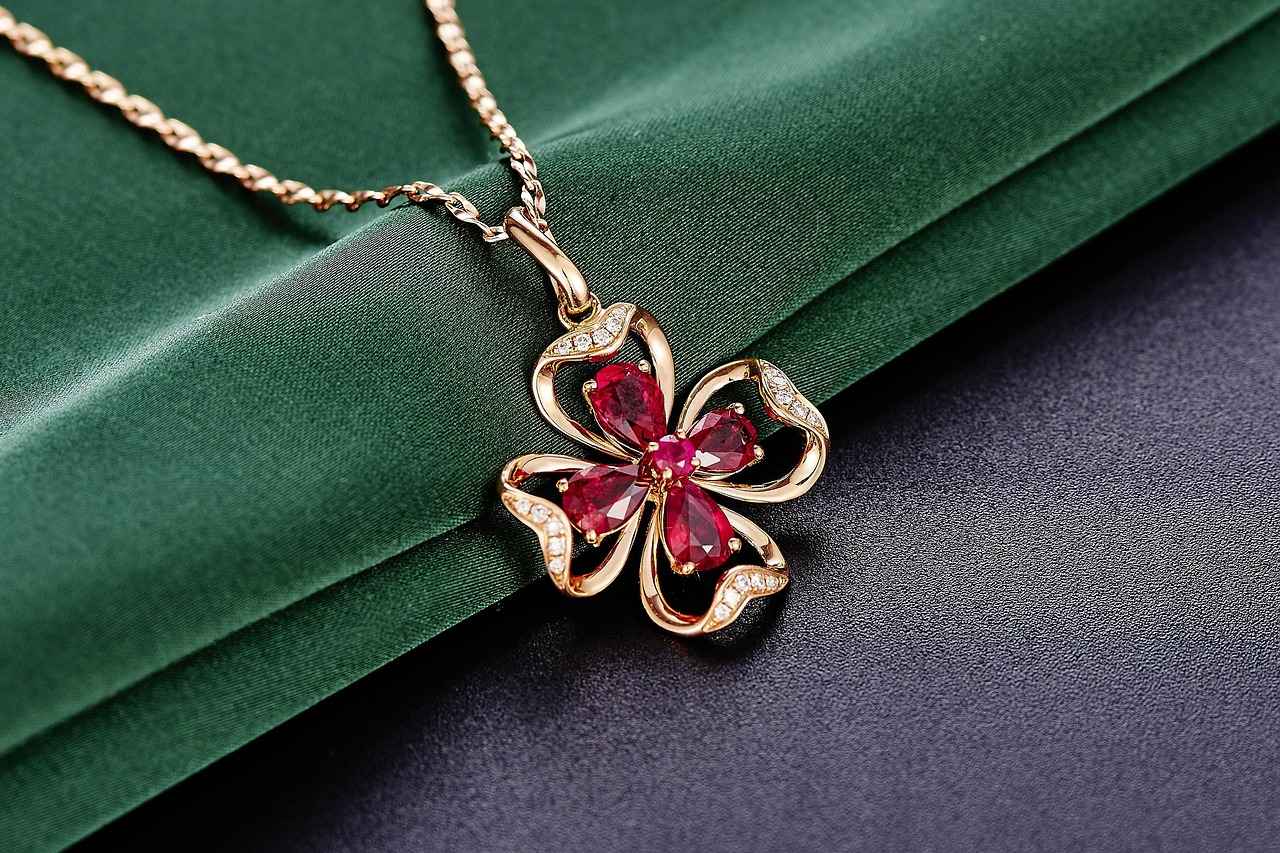This article delves into the fascinating world of notorious jewelry heists and thefts that have occurred throughout history. It examines the methods employed by criminals, the motivations behind their actions, and the profound impact these events have had on the jewelry industry and society as a whole.
Jewelry thefts are not merely acts of crime; they are often the result of meticulous planning and execution. The allure of precious gems and metals has driven individuals and organized groups to commit daring heists, leaving a trail of intrigue and fascination. These events have not only changed the landscape of the jewelry market but have also influenced public perception regarding security and safety.
Among the most infamous jewelry heists is the Great Diamond Heist of 1911, where a band of thieves executed a complex plan to steal a vast fortune in diamonds from a London jeweler. Their success was attributed to their extensive knowledge of security systems and their ability to bypass them.
Another significant case is the Antwerp Diamond Heist of 2003, which remains one of the largest heists in history. This audacious theft showcased the level of sophistication that modern thieves can achieve, utilizing advanced techniques and technology to carry out their plans.
The motivations behind these high-profile thefts vary. While some criminals are driven by the lure of financial gain, others may have personal vendettas or psychological reasons. Understanding these motivations provides insight into the criminal mind and the factors that lead to such elaborate schemes.
Furthermore, the impact of these thefts on the jewelry industry cannot be understated. In response to rising crime rates, jewelers have adopted stricter security measures, including advanced surveillance systems and insurance policies to safeguard their assets.
In conclusion, the history of jewelry heists is rich with stories of audacity and intrigue. As society evolves, so do the methods of thieves, making it essential for the jewelry industry to remain vigilant and proactive in protecting their treasures.

The Most Infamous Jewelry Heists
The world of jewelry heists is filled with drama, intrigue, and audacious plans that have captivated the public’s imagination for centuries. Among the most infamous jewelry heists, the stories of these daring criminals stand out not just for their audacity but also for the meticulous planning that went into executing these high-stakes thefts. Each heist serves as a reminder of the lengths to which individuals will go for the allure of wealth.
- The Great Train Robbery of 1963: Though not exclusively a jewelry heist, this notorious event included the theft of a significant amount of jewelry. The robbers executed a carefully orchestrated plan, stopping a Royal Mail train and making off with millions in cash and valuables.
- The Hatton Garden Heist (2015): This daring burglary involved a group of elderly thieves who broke into a safe deposit company over the Easter weekend, stealing an estimated £14 million in cash and jewelry. Their planning and execution demonstrated a surprising level of sophistication.
- The Antwerp Diamond Heist (2003): Often regarded as the largest diamond heist in history, a group of thieves infiltrated the Antwerp Diamond Center, bypassing multiple security measures and stealing over $100 million worth of diamonds, gold, and other jewels.
What makes these heists particularly fascinating is not just the value of the items stolen, but also the creativity and cunning involved in their execution. The thieves often spent months, if not years, planning their operations, studying security systems, and identifying the best times to strike. Their audacity has left a lasting impact on both the jewelry industry and law enforcement, prompting changes in security measures and the way jewelers conduct business.
In conclusion, the tales of these infamous jewelry heists remind us of the ever-present battle between crime and security. As technology advances, so too do the methods of thieves, ensuring that the world of jewelry theft remains as thrilling as ever.

Iconic Jewelry Theft Cases
This section explores some of the most in history, which have not only captivated the public’s imagination but also highlighted the intricate planning and execution behind these audacious crimes. Each case presents a unique narrative, showcasing the daring nature of the thieves and the societal impact of their actions.
- The Great Diamond Heist of 1911
- Overview: This infamous heist took place in London, where a group of skilled thieves managed to steal a fortune in diamonds from the Wellington Hotel. The meticulous planning and execution of this crime have made it a legendary tale in the world of theft.
- Impact: The heist not only shocked the public but also led to significant changes in security protocols within the jewelry industry.
- The Antwerp Diamond Heist
- Overview: In 2003, a group of thieves executed one of the largest heists in history at the Antwerp Diamond Center, making off with over $100 million worth of diamonds, gold, and other jewels.
- Execution: The thieves, who were part of an organized crime syndicate, used sophisticated methods to bypass the state-of-the-art security systems in place, showcasing a level of planning that was both audacious and impressive.
- The Hatton Garden Heist
- Overview: This daring heist took place over the Easter weekend in 2015, when a group of elderly thieves broke into a safe deposit company in London’s jewelry district, stealing an estimated £14 million worth of cash and jewels.
- Public Fascination: The age of the thieves and their meticulous planning captivated the media, leading to widespread coverage and even a film adaptation.
These cases not only highlight the ingenuity and boldness of the thieves but also serve as cautionary tales for the jewelry industry, prompting ongoing advancements in security measures.
The Great Diamond Heist of 1911
stands as one of the most audacious and meticulously planned thefts in history. This notorious heist took place in London, where a group of thieves managed to steal a fortune in diamonds, valued at over £200,000 at the time. The operation not only showcased the thieves’ cunning but also exposed significant vulnerabilities in the security systems of the jewelry industry.
At the heart of this heist was a well-organized gang, known for their previous criminal exploits. They conducted extensive reconnaissance on their target, the London-based jewelry store, to gather crucial information about security measures and employee routines. The planning phase was marked by a combination of intelligence gathering and strategic timing, allowing them to exploit the store’s vulnerabilities effectively.
The execution of the heist was nothing short of theatrical. The thieves gained entry by disguising themselves as legitimate delivery personnel, enabling them to bypass initial security checks. Once inside, they utilized sophisticated tools to disable alarms and bypass locks. Their meticulous approach ensured that they had minimal interaction with store staff, reducing the risk of being caught.
Following the heist, the aftermath was chaotic. The police launched an extensive investigation, mobilizing resources to track down the stolen diamonds. Despite their efforts, the thieves managed to evade capture for a considerable time, leading to a media frenzy that captivated the public’s imagination.
In conclusion, the Great Diamond Heist of 1911 not only highlighted the potential for criminal ingenuity but also prompted significant changes in security protocols within the jewelry industry. The incident remains a pivotal moment in the history of jewelry thefts, serving as a case study for both law enforcement and security professionals.
Planning and Execution
The audacity of jewelry heists often lies in the meticulous planning behind them. In the case of the infamous Great Diamond Heist of 1911, the thieves demonstrated remarkable foresight and organization. They began by conducting extensive reconnaissance on the target, a prominent jewelry store in London. This phase involved observing the store’s daily operations, identifying security routines, and mapping out escape routes.
To execute their plan, the thieves employed a variety of sophisticated tools. They utilized lock-picking sets to bypass high-security locks and crowbars for gaining access to display cases. Additionally, they crafted disguises to blend in with the store’s clientele, allowing them to gather crucial information without raising suspicion.
One of the critical aspects of their strategy was overcoming the security measures in place. The thieves studied the timing of guard patrols and discovered the vulnerabilities in the alarm systems. They even had inside information that revealed the schedule of when the most valuable items were accessible. By exploiting these weaknesses, they managed to execute their heist with alarming precision.
Throughout the operation, communication was key. The team used two-way radios to stay in contact, ensuring that each member was aware of their roles and the timing of each action. This level of coordination not only facilitated a smooth operation but also minimized the risk of capture.
In conclusion, the planning and execution of the Great Diamond Heist exemplify how meticulous preparation, the right tools, and a thorough understanding of security systems can lead to a successful, albeit illegal, operation. The combination of these elements created a heist that would go down in history as one of the most audacious in the world of jewelry theft.
Aftermath and Recovery
The aftermath of a major jewelry heist often reverberates through both the criminal underworld and the legitimate jewelry market. Following the audacious theft, law enforcement agencies typically launch extensive investigations, employing a range of techniques to track down the culprits and recover stolen items. These investigations can span months or even years, often involving international cooperation.
Investigation Efforts
- Law enforcement agencies analyze surveillance footage and gather forensic evidence from the crime scene.
- They may interview witnesses and use informants to gain insights into the thieves’ identities and whereabouts.
- Advanced technology, such as facial recognition and data analytics, is increasingly utilized to enhance investigative effectiveness.
Recovery of Stolen Items
Despite the challenges, some stolen jewelry is eventually recovered. This recovery can occur through various means:
- Items may be found in pawn shops or on the black market, where they are often sold at a fraction of their original value.
- In some cases, stolen goods are returned to their rightful owners through insurance claims or legal proceedings.
- High-profile cases often attract media attention, which can lead to tips from the public that assist in recovery efforts.
Impact on the Jewelry Market
The impact of these heists on the jewelry market can be profound. Following a significant theft, consumer confidence may wane, leading to a temporary decline in sales. Jewelers often respond by implementing enhanced security measures and altering their business practices to mitigate future risks. Additionally, the public’s perception of jewelry safety can shift, influencing buying behaviors and market trends.
In conclusion, the aftermath of jewelry heists serves as a reminder of the ongoing battle between thieves and law enforcement, as well as the broader implications for the jewelry industry. The recovery process, while challenging, plays a crucial role in restoring trust and stability within the market.
The Antwerp Diamond Heist
The Antwerp Diamond Heist, executed in February 2003, stands as one of the most audacious and meticulously planned jewelry thefts in history. This heist, which took place in the heart of Belgium’s diamond district, has captivated the public’s imagination due to its scale and the sophistication of the criminals involved.
In a remarkable display of planning, the thieves, led by a notorious Italian criminal named Leonardo Notarbartolo, managed to bypass a series of high-tech security systems at the Antwerp Diamond Center. They made use of tools such as cutting-edge scanners and lock-picking devices to gain access to the vault, which was believed to be impenetrable. The criminals spent several days surveilling the premises and meticulously mapping out their escape routes, demonstrating a level of detail that would impress even seasoned heist planners.
The heist resulted in the theft of approximately $100 million worth of diamonds, gold, and other jewels, making it one of the largest heists in history. The sheer volume of valuables stolen shocked the jewelry industry and raised serious questions about the security measures in place at high-profile establishments.
Following the heist, law enforcement agencies launched an extensive investigation, which ultimately led to Notarbartolo’s arrest in 2005. He was sentenced to 10 years in prison, but the majority of the stolen jewels were never recovered. This incident not only highlighted the vulnerabilities in jewelry security but also prompted jewelers worldwide to reevaluate their safety protocols.
In conclusion, the Antwerp Diamond Heist remains a landmark case in the annals of jewelry theft. Its intricate planning and execution illustrate the lengths to which criminals will go to achieve their goals, while simultaneously serving as a cautionary tale for the jewelry industry regarding the importance of robust security measures.

Motivations Behind Jewelry Thefts
Jewelry thefts have long fascinated the public, not only for their audacity but also for the complex motivations that drive criminals to commit such acts. Understanding these motivations is essential to grasping the full scope of high-profile jewelry heists. The reasons behind these daring thefts can be categorized into several key areas, including financial gain, personal vendettas, and the influence of organized crime.
At the forefront of most jewelry thefts is the pursuit of financial gain. The allure of valuable items, such as diamonds, gold, and other precious stones, can tempt individuals to plan elaborate heists. Criminals often view these thefts as a means to achieve significant monetary rewards. The high market value of jewelry makes it an attractive target, leading thieves to invest considerable time and effort into planning their operations.
In addition to financial motives, personal vendettas can also drive individuals to commit theft. Some thieves may have personal grievances against the jewelry industry or specific jewelers, leading them to target their establishments. These emotional factors can create a sense of justification for their actions, making the theft feel like a form of retribution.
Organized crime syndicates play a significant role in many high-profile jewelry thefts. These groups provide the necessary resources, networks, and expertise to carry out sophisticated heists. The collaboration among criminals often results in well-coordinated operations that can evade law enforcement. By understanding the dynamics of organized crime, we can gain insight into the larger framework of motivations behind these daring acts.
Examining the psychological profiles of jewelry thieves reveals a complex interplay of motivations. Many criminals are driven by a combination of factors, including thrill-seeking behavior, a desire for recognition, and the adrenaline rush associated with committing a crime. This psychological aspect adds another layer to the motivations behind jewelry thefts, highlighting the multifaceted nature of criminal behavior.
In conclusion, the motivations behind jewelry thefts are diverse and intricate. From the pursuit of wealth to personal vendettas and the influence of organized crime, understanding these factors is crucial for comprehending the phenomenon of high-profile jewelry heists. By exploring these motivations, we can better appreciate the complexities of criminal behavior in the world of jewelry theft.
Financial Gain vs. Personal Motives
When delving into the motivations behind jewelry thefts, it is essential to understand the complex landscape that drives individuals to commit such audacious crimes. The reasons can often be categorized into two primary motivations: financial gain and personal motives.
Financial Gain is perhaps the most straightforward reason for committing theft. Many thieves are driven by the desire to acquire wealth quickly. This pursuit can stem from various factors, including:
- Poverty: In many cases, individuals from economically disadvantaged backgrounds may resort to theft as a means of survival.
- Greed: For others, the allure of wealth and luxury can be an irresistible temptation, leading them to risk everything for the chance of a big payday.
- Debt: Some thieves may find themselves in dire financial situations and see theft as their only way out.
On the other hand, personal motives can also play a significant role in driving individuals to commit theft. These motives may include:
- Emotional Factors: Some thieves may act out of a sense of revenge or personal vendetta, targeting specific individuals or businesses.
- Psychological Needs: Certain individuals may be driven by a psychological compulsion to steal, finding thrill or excitement in the act itself.
- Peer Influence: In some cases, individuals may be drawn into theft by the influence of friends or criminal networks, seeking acceptance or status within a group.
The intersection of these motivations creates a complex profile of a thief. While financial gain often serves as the initial impetus, personal motives can complicate the narrative, leading to a deeper understanding of the psychology behind these crimes. Ultimately, recognizing these motivations can aid in developing effective prevention strategies and understanding the broader implications of jewelry thefts in society.
The Role of Organized Crime
in Jewelry Theft
Jewelry theft has long been a lucrative endeavor for organized crime syndicates, leveraging their extensive resources and networks to carry out high-stakes operations. These syndicates often operate on a global scale, utilizing sophisticated methods and intricate planning to execute their heists.
One of the primary reasons organized crime groups engage in jewelry theft is the high financial reward associated with valuable gems and precious metals. The appeal of stealing items that can easily be sold on the black market makes jewelry theft a preferred choice for many criminals. The following points outline how organized crime syndicates facilitate these crimes:
- Resource Mobilization: Organized crime groups have access to significant financial resources, enabling them to invest in advanced technology and equipment necessary for executing complex heists.
- Intelligence Networks: These criminals often have extensive networks that provide critical information about security systems, potential targets, and the movements of valuable items.
- Expertise in Execution: Many members of these syndicates possess specialized skills, such as safe-cracking or surveillance evasion, which are essential for the successful execution of a jewelry heist.
Moreover, the involvement of organized crime in jewelry theft often leads to a cycle of violence and intimidation. They may resort to threats or violence to ensure compliance from insiders or to eliminate competition. This creates an environment of fear, making it difficult for law enforcement to intervene effectively.
In conclusion, the intersection of organized crime and jewelry theft illustrates a complex web of motivations and methods. Understanding these dynamics is crucial for developing effective prevention strategies and enhancing security measures within the jewelry industry. As technology evolves, so too do the tactics employed by these criminal organizations, necessitating a proactive approach to counteract their influence.

Impact on the Jewelry Industry
The jewelry industry has long been a symbol of luxury and wealth, but it has also faced significant challenges due to jewelry thefts. The repercussions of these thefts extend far beyond the immediate loss of valuable items, influencing security measures and public perception regarding jewelry safety.
Changes in Security Measures
In response to the increasing incidents of jewelry theft, the industry has seen a marked shift in security protocols. Jewelers are now investing heavily in advanced security technologies, including:
- High-definition surveillance cameras that provide clear footage to aid investigations.
- Smart alarms that can alert authorities in real-time.
- Biometric access controls to restrict entry to sensitive areas.
These measures not only protect the assets but also serve to reassure customers that their safety is a priority.
Shifts in Public Perception
The rise in jewelry thefts has also altered public perception regarding the safety of wearing and owning jewelry. Many consumers now consider personal safety a significant factor when purchasing jewelry. This has led to:
- An increase in insurance policies for high-value items.
- Greater demand for discreet designs that do not attract unwanted attention.
- A rise in community awareness programs aimed at educating the public about safety measures.
As a result, consumers are more cautious and informed, impacting their purchasing decisions.
Conclusion
Overall, the repercussions of jewelry thefts have prompted the industry to adapt in various ways. Enhanced security measures are now commonplace, and public awareness regarding jewelry safety has increased significantly. The jewelry industry must continue to evolve in response to these challenges to maintain consumer trust and ensure the safety of both their products and their customers.

Famous Thieves in Jewelry History
The world of jewelry theft is as glamorous as it is dangerous, filled with notorious figures who have left their mark on history through audacious heists. This section delves into the lives of some of the most infamous thieves in jewelry history, examining their backgrounds, methods, and the legacies they left behind.
- Thomas “Tommy” McGowan: Known as the “King of the Jewel Thieves,” McGowan’s career spanned several decades in the early 20th century. His method involved meticulous planning and insider information, which allowed him to bypass even the most sophisticated security systems of his time.
- Hatton Garden Gang: This group of elderly thieves shocked the world in 2015 when they executed a daring heist in London’s diamond district. Their operation involved drilling through two meters of concrete to access a vault, showcasing their determination and experience.
- Raffaele Imperiale: An Italian mobster linked to the infamous Antwerp Diamond Heist of 2003, Imperiale’s criminal network played a significant role in facilitating one of the largest jewelry thefts in history. His operations highlighted the intersection of organized crime and high-stakes theft.
The methods employed by these thieves often reflect their backgrounds and resources. Many relied on inside information, while others utilized advanced technology to execute their plans. For instance, the Hatton Garden Gang used tools typically reserved for construction work, demonstrating a blend of ingenuity and audacity.
Each of these thieves has left a lasting legacy on the jewelry industry. Their actions have led to increased security measures and a heightened awareness of the risks involved in jewelry ownership. Furthermore, their stories continue to captivate the public, inspiring books, films, and documentaries that explore the allure and danger of the world of high-value theft.
In conclusion, the infamous thieves in jewelry history not only highlight the criminal underbelly of wealth but also serve as reminders of the ongoing battle between security and criminal ingenuity.
The Masterminds Behind the Heists
delve into the fascinating world of notorious jewelry thieves, examining their backgrounds, criminal careers, and the methods that led them to infamy. These individuals are not merely criminals; they are often described as master strategists who meticulously plan their heists, showcasing a unique blend of intelligence and audacity.
Many of the most infamous jewelry thieves have compelling stories. For instance, Michel “The Brain” Decker was known for his elaborate schemes that often involved insider information and meticulous planning. His criminal career spanned over a decade, during which he executed several high-profile thefts, including the notorious London Diamond Heist. Decker’s ability to blend in with luxury events allowed him to gather crucial intelligence, making him a formidable figure in the world of crime.
Another key figure is Rafaela “The Queen of Heists” Garcia, whose reputation was built on her audacious plans and exceptional execution. Garcia was known for her ability to recruit skilled accomplices, turning her heists into well-orchestrated operations. Her most famous theft involved a daring break-in at a high-security jewelry store in Paris, where she and her team managed to escape with millions in diamonds.
The criminal careers of these individuals often reveal a pattern: a combination of charisma, intelligence, and a deep understanding of security systems. Many of these thieves were not born into crime; rather, they were drawn to it through various circumstances, including financial difficulties or a desire for excitement. Their motivations vary, but the common thread is a relentless pursuit of wealth and notoriety.
In conclusion, the masterminds behind jewelry heists are complex characters whose stories reflect the darker side of human ambition. Their legacies continue to fascinate and inspire both fear and admiration, making them enduring figures in the annals of crime.
Criminal Profiles and Psychological Analysis
The world of jewelry theft is not only filled with daring escapades but also deeply intertwined with the psychological profiles of the thieves involved. Understanding what drives these individuals to commit such elaborate crimes can provide valuable insights into their motivations and methods.
Psychological Motivations
- Thrill-Seeking Behavior: Many jewelry thieves are motivated by the adrenaline rush that comes from planning and executing a heist. The thrill of outsmarting security systems and law enforcement can be a powerful draw.
- Financial Gain: While some may be driven by the desire for wealth, it’s often the case that underlying financial desperation fuels these criminal acts. Thieves may see theft as a quick solution to their economic problems.
- Desire for Recognition: In some instances, thieves are motivated by a need for notoriety. Successfully pulling off a high-profile heist can bring a sense of fame and respect within certain circles.
Types of Thieves
| Type | Description |
|---|---|
| Masterminds | Individuals who plan heists meticulously, often with a background in criminal activity or a high level of intelligence. |
| Accomplices | Thieves who assist in the execution of the heist, often recruited for their specific skills or knowledge. |
| Inside Men | Employees or associates who provide crucial information about security measures, schedules, and vulnerabilities. |
Societal Influences
The environment in which a thief is raised can also play a significant role in shaping their criminal behavior. Factors such as socioeconomic status, exposure to crime, and family dynamics can contribute to the development of a criminal mindset.
Conclusion
In summary, the psychological profiles of famous jewelry thieves reveal a complex interplay of motivations ranging from thrill-seeking to financial desperation. By analyzing these profiles, we can gain a better understanding of the factors that drive individuals to commit such audacious crimes. This knowledge can ultimately aid in developing more effective prevention strategies within the jewelry industry.

Modern Jewelry Heists: Trends and Techniques
Jewelry theft has undergone significant transformations in the modern era, driven largely by advancements in technology and the evolving tactics employed by thieves. This article provides an overview of these changes, illustrating how the landscape of jewelry theft has adapted to contemporary challenges.
In the past, jewelry thefts were primarily executed through physical break-ins and straightforward robbery techniques. However, with the rise of technology, thieves have become increasingly sophisticated. Today, they utilize digital tools and cyber tactics to plan and execute their heists. For instance, the use of social engineering allows criminals to gather critical information about their targets, including security systems and personal schedules.
One notable trend is the rise of organized crime syndicates, which leverage advanced technology to carry out large-scale thefts. These groups often employ surveillance equipment to monitor potential targets and identify vulnerabilities. Furthermore, the use of encrypted communication ensures that their plans remain confidential, making it harder for law enforcement to intervene.
Additionally, the emergence of the dark web has created new avenues for selling stolen jewelry. Thieves can now easily connect with buyers across the globe, bypassing traditional markets and making recovery efforts more complicated for authorities.
To combat these modern threats, jewelers and collectors are increasingly investing in advanced security measures. Innovations such as smart alarms, biometric locks, and real-time surveillance systems are becoming standard in the industry. These technologies not only deter potential thieves but also provide valuable data that can assist in investigations.
In conclusion, the evolution of jewelry thefts in the modern era reflects a complex interplay between technology and criminal ingenuity. As thieves adopt new tactics, the jewelry industry must remain vigilant and proactive in enhancing security measures to protect valuable assets.

Preventing Jewelry Thefts: Security Measures
In today’s world, the protection of valuable jewelry is more critical than ever. Jewelry theft poses a significant threat to both jewelers and collectors, necessitating the implementation of robust security measures. This article discusses various strategies that can be employed to safeguard precious items, focusing on technological advancements and best practices.
With the rise of sophisticated theft techniques, it is essential for jewelers and collectors to be proactive. The following measures can significantly reduce the risk of theft:
- Advanced Surveillance Systems: Installing high-definition cameras with night vision capabilities can help monitor premises effectively. These systems should be strategically placed to cover all entry points and display areas.
- Alarm Systems: State-of-the-art alarm systems equipped with motion detectors and glass break sensors can provide immediate alerts in case of unauthorized access.
- Access Control: Limiting access to sensitive areas through keycard systems or biometric scanners ensures that only authorized personnel can enter secure locations.
The jewelry industry has embraced various technological innovations to enhance security:
- GPS Tracking: Incorporating GPS tracking devices in high-value items allows for real-time monitoring and recovery in case of theft.
- Smart Locks: Utilizing smart locks that can be controlled remotely offers greater flexibility and security compared to traditional locking mechanisms.
- Digital Inventory Management: Implementing software solutions to track inventory can help in quickly identifying missing items and streamlining recovery efforts.
In addition to technological measures, following best practices can further enhance security:
- Regular Security Audits: Conducting periodic assessments of security measures helps identify vulnerabilities and areas for improvement.
- Insurance: Obtaining comprehensive insurance coverage is crucial for protecting against financial loss due to theft.
- Staff Training: Educating employees about security protocols and potential threats can foster a culture of vigilance and preparedness.
By implementing these measures, jewelers and collectors can create a robust security framework that not only protects their assets but also instills confidence in their clients. As the landscape of jewelry theft continues to evolve, staying informed and adapting to new challenges will be key to safeguarding valuable treasures.
Technological Innovations in Security
In recent years, the jewelry industry has witnessed a significant transformation in security measures, driven by the increasing sophistication of theft tactics. Technological innovations play a crucial role in enhancing security systems, making it increasingly difficult for criminals to succeed in their endeavors. This section will delve into the latest advancements in security technology that are specifically designed to prevent jewelry thefts.
One of the most notable advancements is the integration of smart alarm systems. These systems not only alert owners of unauthorized access but also provide real-time notifications to law enforcement. Modern alarms are equipped with motion sensors and glass break detectors, which can significantly reduce response times during a theft attempt.
Another key development is the use of high-definition surveillance cameras. Unlike traditional cameras, modern options offer features such as night vision, facial recognition, and remote access via smartphones. This allows jewelers and collectors to monitor their premises even when they are not physically present. The implementation of cloud storage for video footage ensures that critical evidence is preserved, which can be invaluable during investigations.
Moreover, advancements in access control systems have revolutionized how jewelry stores and collectors secure their valuables. Systems that utilize biometric authentication—such as fingerprint and retina scans—provide an additional layer of security that is difficult to bypass. These systems ensure that only authorized personnel can access high-value items.
In addition to these innovations, the use of GPS tracking devices has gained popularity. By embedding these devices in high-value items, owners can track their jewelry in real-time, significantly increasing the chances of recovery in case of theft.
In conclusion, the landscape of jewelry security is evolving rapidly, with technological advancements playing a pivotal role in preventing thefts. By adopting these modern security measures, jewelers and collectors can better protect their investments and deter potential thieves.
Insurance and Recovery Strategies
In the world of jewelry, both for jewelers and collectors, the significance of having robust insurance cannot be overstated. Jewelry is not only valuable in monetary terms but also often holds sentimental value, making it imperative to protect these assets against unforeseen events such as theft, loss, or damage.
Having a comprehensive insurance policy tailored specifically for jewelry can provide peace of mind. It ensures that in the unfortunate event of a theft, the owner can recover their losses effectively. Here are some key strategies that can aid in the recovery of stolen items:
- Document Everything: Maintain detailed records of all jewelry pieces, including photographs, appraisals, and receipts. This documentation is crucial for insurance claims.
- Report to Authorities: In case of theft, immediately report the incident to local law enforcement. Provide them with all necessary documentation and details to assist in their investigation.
- Notify Your Insurance Provider: Contact your insurance company as soon as possible to file a claim. Provide them with the documentation and any police reports.
- Utilize Online Platforms: Make use of online databases and social media to alert the public about the stolen items. Websites dedicated to stolen property can help spread the word.
- Engage Professional Recovery Services: Consider hiring professionals who specialize in recovering stolen jewelry. They often have the resources and networks to track down stolen items.
Furthermore, it is critical to regularly review and update your insurance policy. As your collection grows or changes, so should your coverage. This proactive approach not only protects your investment but also ensures that you are adequately compensated in the event of a loss.
In conclusion, the combination of a solid insurance policy and strategic recovery methods forms a powerful defense against the risks associated with jewelry ownership. By being prepared, jewelers and collectors can safeguard their treasures and navigate the complexities of theft recovery with greater confidence.
Frequently Asked Questions
- What are some of the most famous jewelry heists in history?
Some of the most notorious jewelry heists include the Great Diamond Heist of 1911 in London and the Antwerp Diamond Heist of 2003. These events are notorious for their elaborate planning and execution, capturing the public’s imagination.
- What motivates thieves to commit jewelry thefts?
Thieves are often driven by various motivations, including financial gain and personal vendettas. In some cases, organized crime syndicates play a significant role, providing resources and networks that facilitate these daring acts.
- How do jewelry thefts impact the industry?
Jewelry thefts can have a profound impact on the industry, leading to heightened security measures and shifts in public perception regarding the safety of jewelry. Jewelers often reassess their security protocols to prevent future incidents.
- What security measures can jewelers implement to prevent theft?
Jewelers can adopt a variety of security measures, including advanced surveillance systems, alarms, and secure storage options. Implementing these technologies can significantly reduce the risk of theft.
- How important is insurance for jewelers and collectors?
Insurance is crucial for jewelers and collectors as it provides financial protection against theft. Having a solid recovery strategy in place can also help in regaining stolen items, making insurance a vital component of jewelry security.







































































